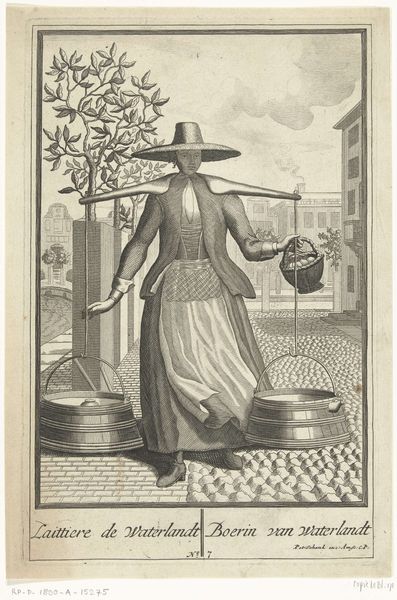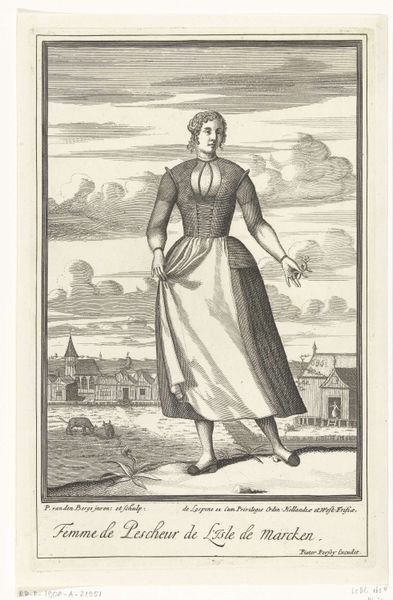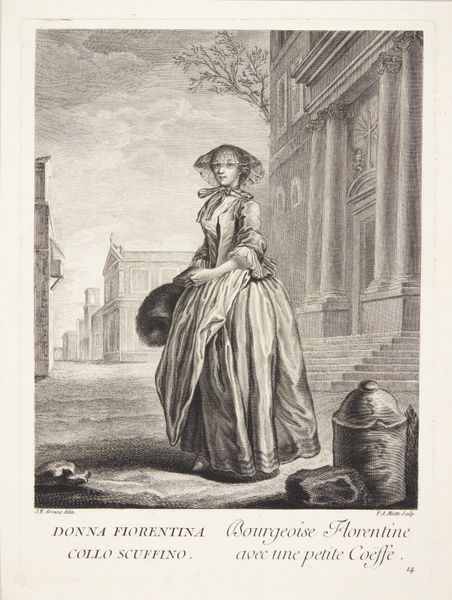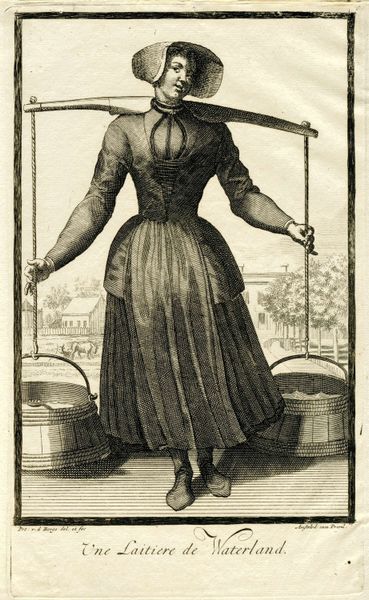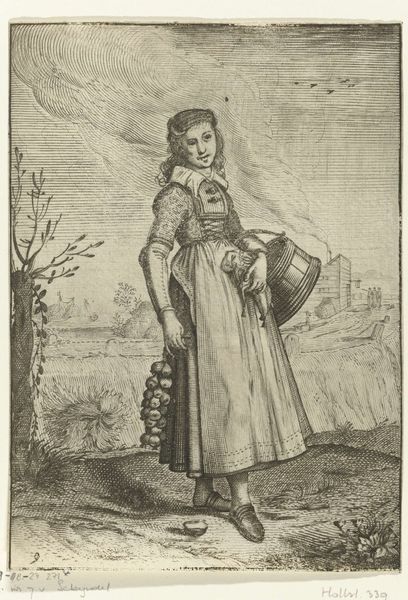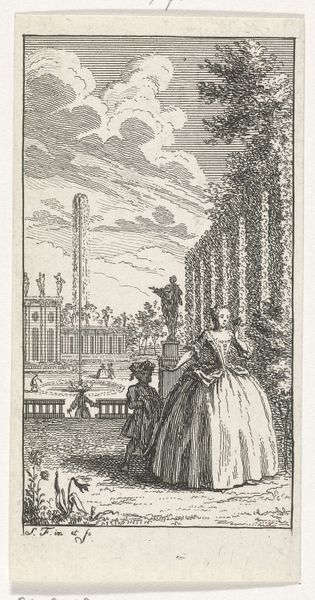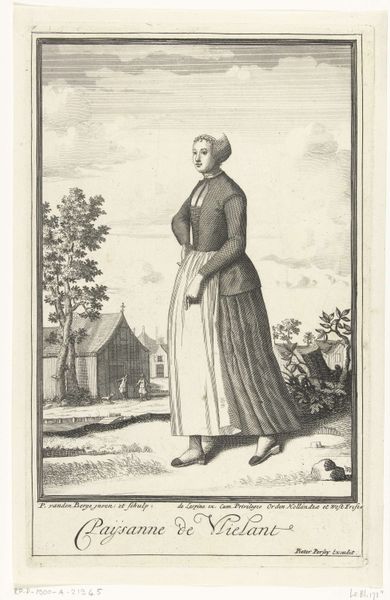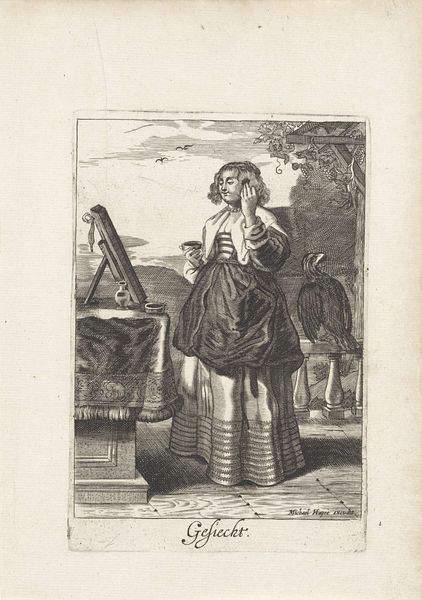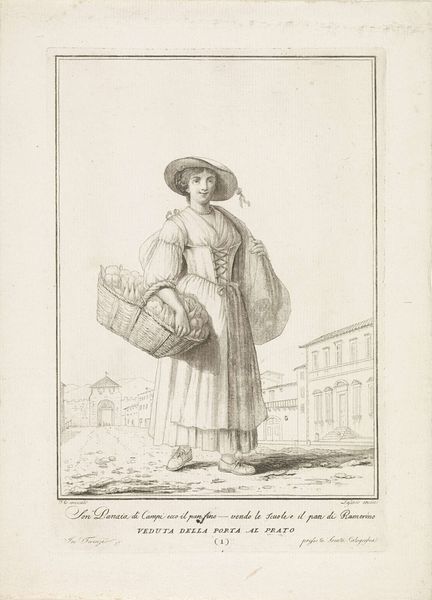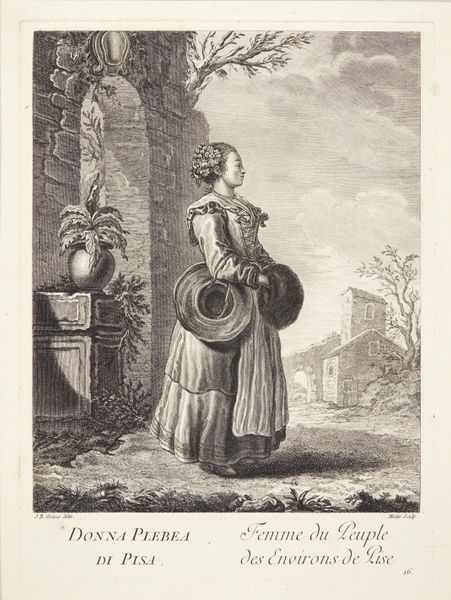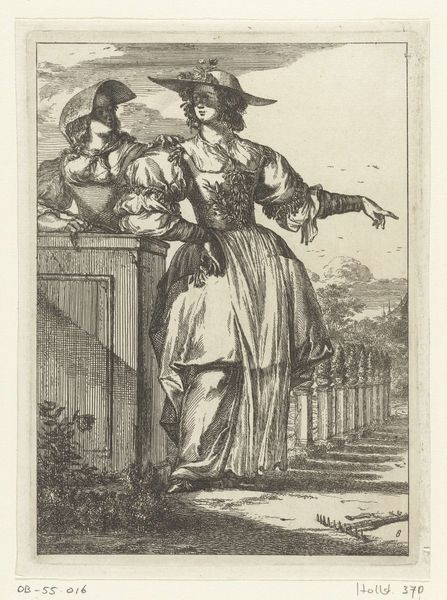
#
comic strip sketch
#
mechanical pen drawing
#
pen illustration
#
old engraving style
#
junji ito style
#
cartoon sketch
#
personal sketchbook
#
pen-ink sketch
#
pen work
#
storyboard and sketchbook work
Dimensions: height 278 mm, width 177 mm
Copyright: Rijks Museum: Open Domain
Curator: Standing before us, we have Pieter van den Berge’s, *Melkmeid uit Waterland*, which translates to "Milkmaid from Waterland," created before 1689. It's currently housed here at the Rijksmuseum. Editor: My immediate reaction is that there is such clarity in the detail. You can almost feel the weight of those milk buckets simply by looking at them. There's also this subtle geometry with the paving stones contrasting with the soft folds of her dress. Curator: Van den Berge was really exploring the labour practices of the 17th century. The woman carrying milk would likely have worked every day to make her income. The piece is an engraving, making it more affordable and reproducible than painting. It would circulate widely to demonstrate and confirm ideas of Dutch national identity at that time. Editor: It's quite impressive, this technical precision of engraving allowing for such texture. The fabrics have a wonderful quality, particularly on the skirt, it leads your eye across the whole image and the details on the architecture bring another layer to it all. Curator: Absolutely, the cross-hatching builds volume with the materiality and manufacture front and center; and think about distribution of that engraving. That adds a layer to our interpretation. How it moves among people becomes key to what the image *does*. Editor: And the setting itself really contributes. The grid structure creates an orderliness to it. I am curious how Van den Berge thought of it, the woman centered so deliberately and presented amidst these structured planes. Curator: He presents a sort of everyday elegance within the setting of labour and consumption. A woman in a wide hat with her milk in a Waterland village. A Dutch archetype being confirmed. Editor: In looking at it today, the sharp rendering captures details and form, providing a complex interplay of shadow and light. There is more here than simply representing labour. Curator: Seeing this image reminds us of the daily acts involved in the culture. By looking at things through materiality, we see more clearly those practices. Editor: For me it shows how the composition and form offer many different readings of Dutch society back then. The milkmaid might offer clues into its workings, but also the enduring power of images and technique to captivate.
Comments
No comments
Be the first to comment and join the conversation on the ultimate creative platform.
